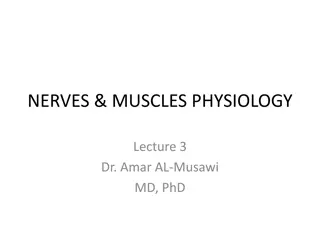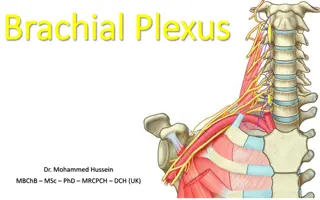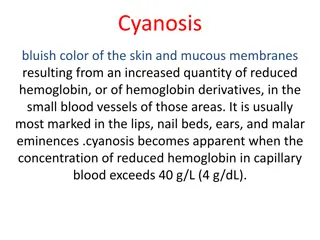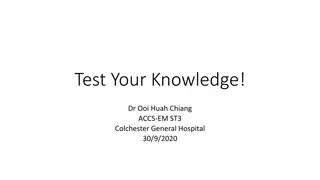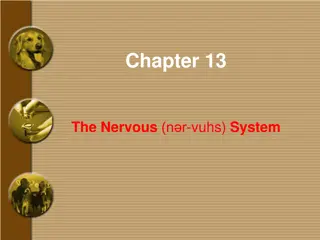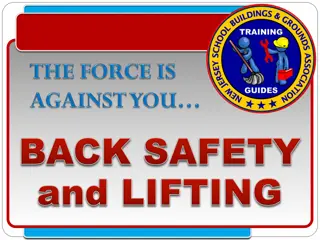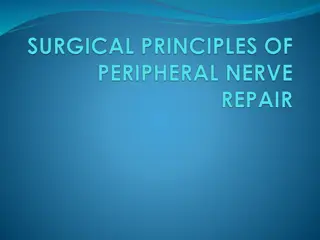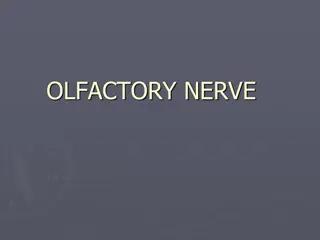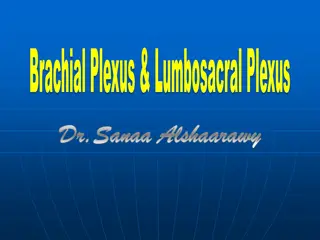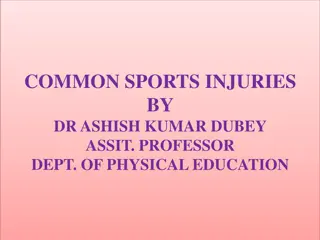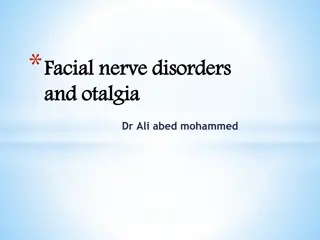Overview of Peripheral Nerve Injuries and Brachial Plexus Injuries
Explore different types of peripheral nerve injuries including Erb's palsy, Klumpke palsy, isolated axillary nerve injury, and isolated musculocutaneous nerve injury. Learn about the anatomy, causes, motor and sensory exams, and management of these injuries. Understand the myotomes and dermatomes associated with brachial plexus roots and recognize clinical features such as waiter's tip posture and ape hand. Gain insight into radial nerve palsy and its anatomical distribution.
Download Presentation

Please find below an Image/Link to download the presentation.
The content on the website is provided AS IS for your information and personal use only. It may not be sold, licensed, or shared on other websites without obtaining consent from the author. Download presentation by click this link. If you encounter any issues during the download, it is possible that the publisher has removed the file from their server.
E N D
Presentation Transcript
Peripheral nerve injuries M M Al-Qattan
Brachial plexus injury Closed injuries (difficult delivery, RTA): the level of injury is at the roots 3 types: A-Erb: C5,6,7 B- klumpke: C8, T1 C- Total: all roots note:phrenic nerve palsy (C4) may occur with A&C;Horner syndrome(loss of ipsilateral facial sympathetics coming from T1,leading to ptosis meiosis and anhydrosis)may occur with B&C
Examination of the brachial plexus roots: myotomes and dermatomes Myotomes: C5: shoulder abduction and external ortation C6: elbow flexion C7: wrist extension C8 :making a fist T1: hand intrinsics
Dermatomes (note middle finger by the middle root=C7)
Klumpke palsy: Ape hand (no hand intrinsics leading to clawing of all fingers)
Isolated axillary nerve injury Causes: shoulder surgery/trauma Motor exam: loss of Deltoid (can not fully abduct the shoulder) Sensory exam: loss of sensation over the deltoid muscle
Isolated musculocutaneous nerve injury Causes: usually stab wounds near the axilla Motor exam: loss of biceps (elbow flexion) Sensory exam: loss of sensation along the distribution of the lateral cutaneous nerve of the forearm (i.e. the lateral forearm)
Radial nerve palsy Anatomy: the nerve supplies the triceps in the upper arm Then goes in the spiral groove of the humerus Then supplies the wrist extensors at the elbow level Then divides into 2 branches: pure sensory (superficial radial nerve) and pure motor (posterior interosseous nerve) which supplies thumb extension and finger extension at the MP joints
Saturday night palsy Cause: drunk falling asleep on the edge of a chair compresses the radial nerve in the axilla Motor: loss of EXTENSION at the: elbow,wrist, thumb, and fingers Sensory: lost in the hand (see diagram)
Fracture humerus at the spiral groove Motor: normal triceps but a DROP WRIST (no wrist extension) and no thumb/finger extension Sensory: lost in the hand (see diagram)
Isolated posterior interosseous nerve injury Cause: radial head fracture, radial head excision Motor: can extend the elbow and wrist; but can not extend the thumb or fingers NO SENSORY LOSS (pure motor nerve)
Median and ulnar nerve injuries Anatomy: the volar forearm muscles A- superficial group : flexor carpi radialis, flexor carpi ulnaris, flexor digitorum superficialis, pronator teres: all by Median n. except FCU B- Deep group: flexor pollicis longus, flexor digitorum profundus, pronator quadratus: all by the anterior interosseous nerve (branch of Median n) except the ulnar half of FDP (to ring and little fingers)
Anterior interosseous nerve palsy Cause: supracondylar fractures Motor: lost FPL, and FDP of the index and middle fingers ..Hence, can not make a perfect O = the O sign NO SENSORY LOSS (pure motor nerve)
Median and ulnar nerves and hand intrinsics Thenar muscles: thumb adduction and opposition Hypothenar muscles : little finger abduction and opposition Lumbricals and interosseous muscles: A-both participate in simultaneous MPJ flexion and IPJ extension (anti-claw) B-interosseous muscles are responsible for finger abduction/adduction (except for little finger abduction) Note: All are supplied by the ulnar n. except thumb opposition and the radial 2 lumbricals which are supplied by the Median n.
Injury of median nerve at the wrist Cause: laceration, carpal tunnel syndrome Motor: only loss of thumb opposition. The loss of radial 2 lumbricals does not cause clawing because the interosseous muscles are intact Sensory loss: see diagram
Injury of ulnar nerve at the wrist Cause: lacerations Motor loss: A- loss of thumb adduction (Froment sign) B- loss of hypothenars(loss of little finger abduction and opposition) C-loss of finger abduction/adduction D- ulnar claw hand Note: no claw in the index or middle fingers because the radial 2 lumbricals are intact
Lower limb nerve injuries Femoral nerve injury : loss of sensation in the anterior and medial thigh and loss of quadriceps (knee extension) Common peroneal nerve injury (at fibular head): loss of sensation in lateral leg and dorsum of foot, and loss peroneus muscles and loss of toe extension and ankle extension (foot drop) Posterior tibial nerve injury: loss of sensation in the sole of the foot and loss of flexion of the toes/ankle





